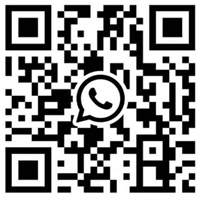コンテンツ
標準
- ASTM D7142-2/F963: Standard Consumer Safety Specification for Toy Safety
- CFR 1500: Consumer Product Safety Commission (CPSC) Hazardous Substances Act
- EN 71 PART1: Safety of Toys – Mechanical and Physical Properties
- GB 6675: National Standard for Toy Safety (China)
- ISO 8124: Safety of Toys – Migration of Certain Elements
- M&P P115A: International Standard for Apparel Fastener Testing
Product Advantages
- Child Safety First: Specifically designed to prevent button/fastener detachment risks in infant/children’s clothing.
- Versatile Testing: Evaluates snap buttons, zippers, hooks, D-rings, decals, and denim fasteners.
- Precision Force Control: Imada push-pull gauge applies 17 lbs (7.73 kg) vertical force with 0.1 kg accuracy.
- Compliance Assurance: Meets CPSC, EN, and ISO standards, reducing liability for manufacturers.
- Manual & Automatic Modes: Rotary flywheel for manual force adjustment or automated testing.
- Durable Construction: Stainless steel clamps and anvil ensure long-term reliability.
Product Features
- Dual-Clamp Design: Concave clawless pliers (fastener holder) and bottom fabric pliers (garment holder) ensure secure fixation.
- Standardized Testing: Applies 17 lbs (7.73 kg) force for 10 seconds to simulate real-world stress.
- Adjustable Anvil: Accommodates diverse fabric thicknesses and fastener sizes.
- Multi-Purpose Accessories: Includes clamps for zippers, bow ties, and four-hole fasteners.
- No Power Required: Manual operation reduces maintenance costs.
- Portable Design: Compact size (40×40×75 cm) and 35 kg weight enable easy relocation.
技術パラメータ
| パラメータ | 仕様 |
|---|
| Test Mode | Manual (Rotary Flywheel) |
| Max. Test Force | 30 kgf (Kilogram-Force) |
| Standard Pull Force | 17 lbs (7.73 kg) |
| Counterweight | 15 lbs (6.8 kg) |
| Clamp Type | Concave Clawless Pliers + Bottom Fabric Pliers |
| Force Gauge | Imada Push-Pull Gauge (Digital Display) |
| Hold Time | 10 seconds (Adjustable) |
| Sample Compatibility | Snap buttons, zippers, hooks, D-rings, decals, denim fasteners |
| 電源装置 | No Power Required |
| Dimensions (L×W×H) | 40 cm × 40 cm × 75 cm |
| Net Weight | 35 kg |
免責事項: 上記のコンテンツは,業界内部者のみの参照およびコミュニケーションのためであり,その正確性または完全性を保証しません.関連法規および本ウェブサイトの規制により,関連品を購入するユニットまたは個人は,有効な資格および資格条件を取得する必要があります.

